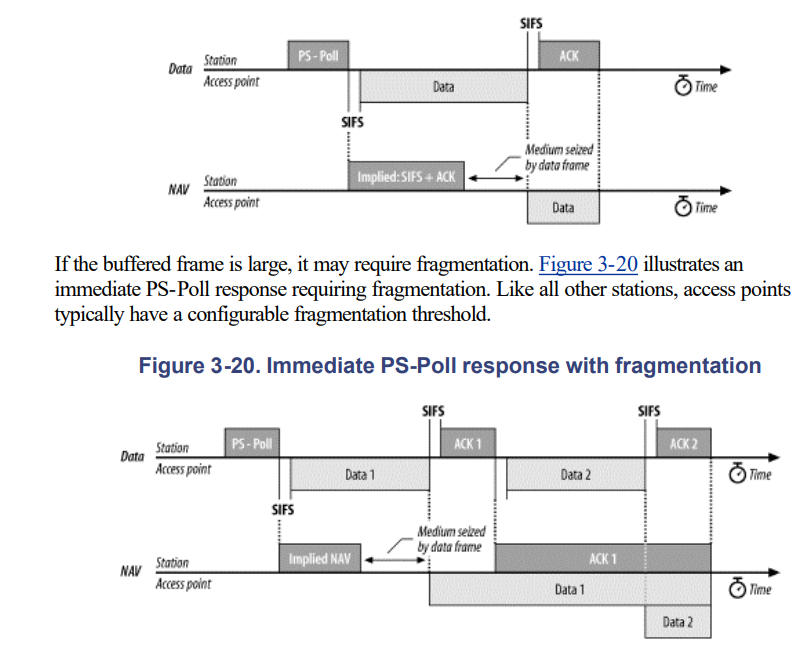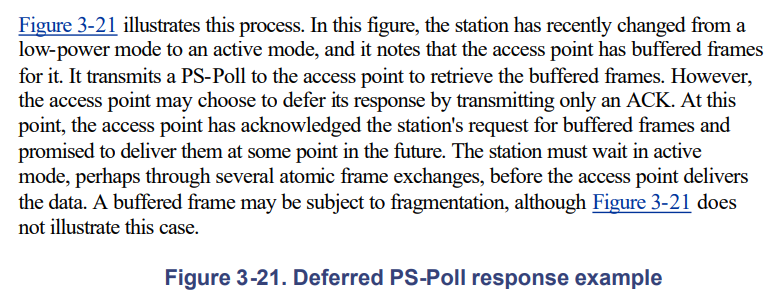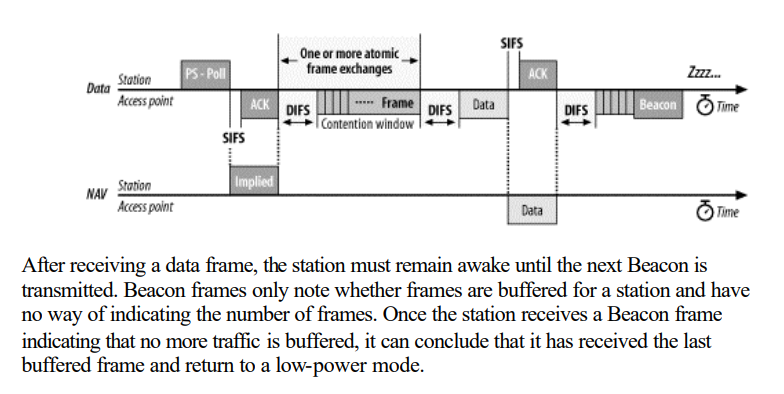Power Saving Sequences - LogeshVel/802.11 GitHub Wiki
Power-Saving Sequences
The most power-hungry components in RF systems are the amplifiers used to boost a signal immediately prior to transmission and to boost the received signal to an intelligible level immediately after its reception.
802.11 stations can maximize battery life by shutting down the radio transceiver and sleeping periodically. During sleeping periods, access points buffer any unicast frames for sleeping stations. These frames are announced by subsequent Beacon frames. To retrieve buffered frames, newly awakened stations use PS-Poll frames.
Immediate response
Access points can respond immediately to the PS-Poll. After a short interframe space, an access point may transmit the frame.
The PS-Poll frame contains an Association ID in the Duration/ID field so that the access point can determine which frames were buffered for the mobile station.

Deferred response
Instead of an immediate response, access points can also respond with a simple acknowledgment. This is called a deferred response because the access point acknowledges the request for the buffered frame but does not act on it immediately.
A station requesting a frame with a PS-Poll must stay awake until it is delivered. Under contention-based service, however, the access point can deliver a frame at any point. A station cannot return to a low-power mode until it receives a Beacon frame in which its bit in the traffic indication map (TIM) is clear.


Beacon frames only note whether frames are buffered for a station and have no way of indicating the number of frames.